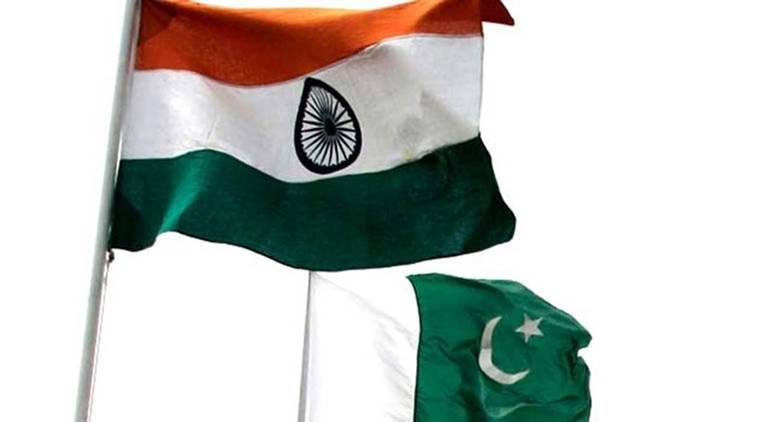- India
- International
India withdraws Pak trade status: May not hurt much but sends out stern signal
While the withdrawal is the first tangible punitive step in what could be an escalatory ladder, its impact on trade is unlikely to be substantial given the low volume — consistently under $2.5 billion on an annual basis.

-By Prabha Raghavan and Anil Sasi
Less than 24 hours after the terror attack in Jammu and Kashmir’s Pulwama district that killed 40 CRPF personnel, India withdrew the Most Favoured Nation (MNF) status it accorded to Pakistan. This decision, taken by the Cabinet Committee on Security Friday morning and announced by Union Finance Minister Arun Jaitley, will enable India to hike Customs duties on imports from Pakistan.
The Commerce Ministry will shortly notify the World Trade Organisation (WTO).
After the Uri terror attack in 2016, India had reviewed Pakistan’s MFN status but decided not to withdraw it. While the withdrawal is the first tangible punitive step in what could be an escalatory ladder, its impact on trade is unlikely to be substantial given the low volume — consistently under $2.5 billion on an annual basis.
In FY18, India-Pakistan trade was a mere $2.40 billion or about 0.4 per cent of India’s overall trade.

In fact, India continues to maintain a substantial trade surplus. Pakistan’s exports to India have been about a fourth of what it imports from India, the MFN concessions notwithstanding. India mainly exports cotton, dyes, chemicals, vegetables and iron and steel while it imports fruits, cement, spices and leather.
Even though the low volume of trade limits the impact that such a step can have, the interruption of input materials such as chemicals and cotton from India will push up costs of production for the Pak industries concerned. Trade diversion, or routing of trade through third countries, is likely to increase, alongside a possible surge in illegal trade between the two.
“The signalling is very important. To go out in the international sphere and say I am not recognising this as a favoured country anymore is a strong indictment,” said Biswajit Dhar, professor at Centre for Economic Studies and Planning, Jawaharlal Nehru University. “For India, it is a major signal, because Pakistan never gave us MFN status and we tolerated this unilateral (arrangement). Despite difficult political relations, we never thought of taking this extreme step,” he said.
According to Indian Council for Research on International Economic Relations professor Nisha Taneja, it’s not possible to ascertain the exact impact of the withdrawal of Pakistan’s status until it is clear whether it means a complete ban on imports from the country, a partial ban or a ban on trade through specific or all routes, including the sea. “In terms of trade, the impact may not be as much, but it is a big signal,” Taneja said.
Article 1 of General Agreement on Tariffs and Trade (GATT), 1994, requires every WTO member country to accord MFN status (or preferential trade terms with respect to tariffs and trade barriers) to all other member countries. Accordingly, India accorded MFN status to all WTO member countries, including Pakistan, from the date of entry into force of the so called Marrakesh Agreement, establishing the WTO.
However, Pakistan is yet to transition fully to MFN status for India and it maintains a Negative List of 1209 products that are not allowed to be imported from India. Also, Pakistan permits only 138 products to be imported from India through the Wagah/Attari border land route. Despite these restrictions, India continues to maintain a substantial trade surplus with Pakistan even though broader trade numbers have largely been static.
Trade between the neighbours jumped nearly three-and-a-half times between 2000-01 and 2005-06 (from $251 million to $869 million per annum) but progress was slower in the decade that followed with volumes rising a little over three times in that period.
India’s trade with much smaller Bhutan is over half that with Pakistan. Trade between India and Pakistan can increase to $37 billion if both countries do away with artificial trade barriers, a World Bank report said in September last year
Bilateral efforts to push trade over the years have failed to take off. In the seventh round of Commerce Secretary-level talks held in September 2012 in Islamabad, a roadmap was agreed for facilitating trade. But it could not be implemented since Pakistan did not notify the removal of trade restrictions through Wagah-Attari land route (which was the first step identified in the roadmap).
The Commerce Ministers of India and Pakistan then met in January 2014 on the sidelines of the 5th SAARC Business Leaders Conclave held at New Delhi.Then in the meeting between Prime Ministers of India and Pakistan on May 27, 2014, India stated that the two countries could move immediately towards full trade normalisation on the basis of the September 2012 roadmap worked out between the Commerce Secretaries of both countries. No bilateral trade meeting between India and Pakistan has taken place since then.
Apr 18: Latest News
- 0118 hours ago
- 0254 years ago
- 037 hours ago
- 0415 hours ago
- 0510 hours ago






































